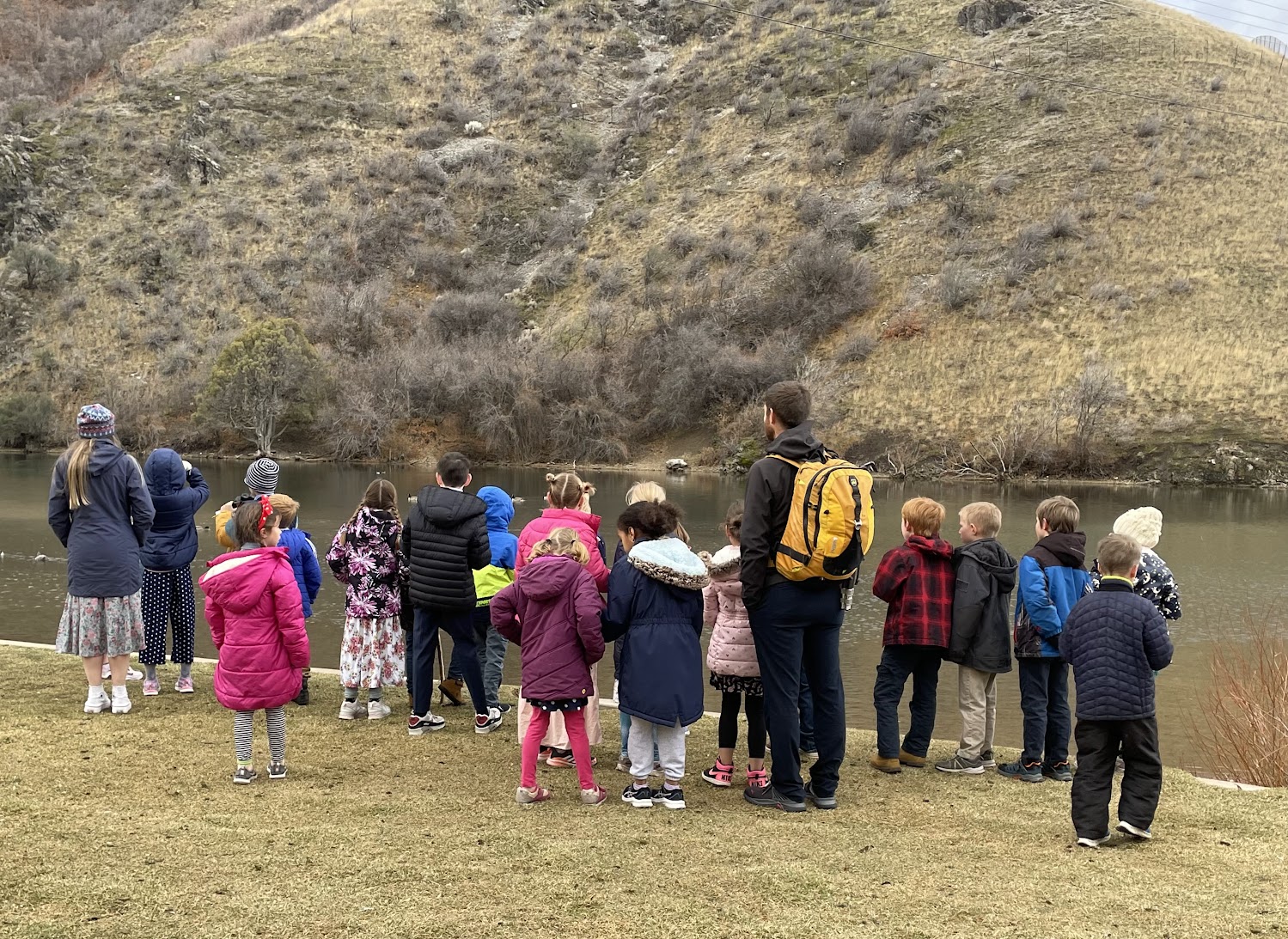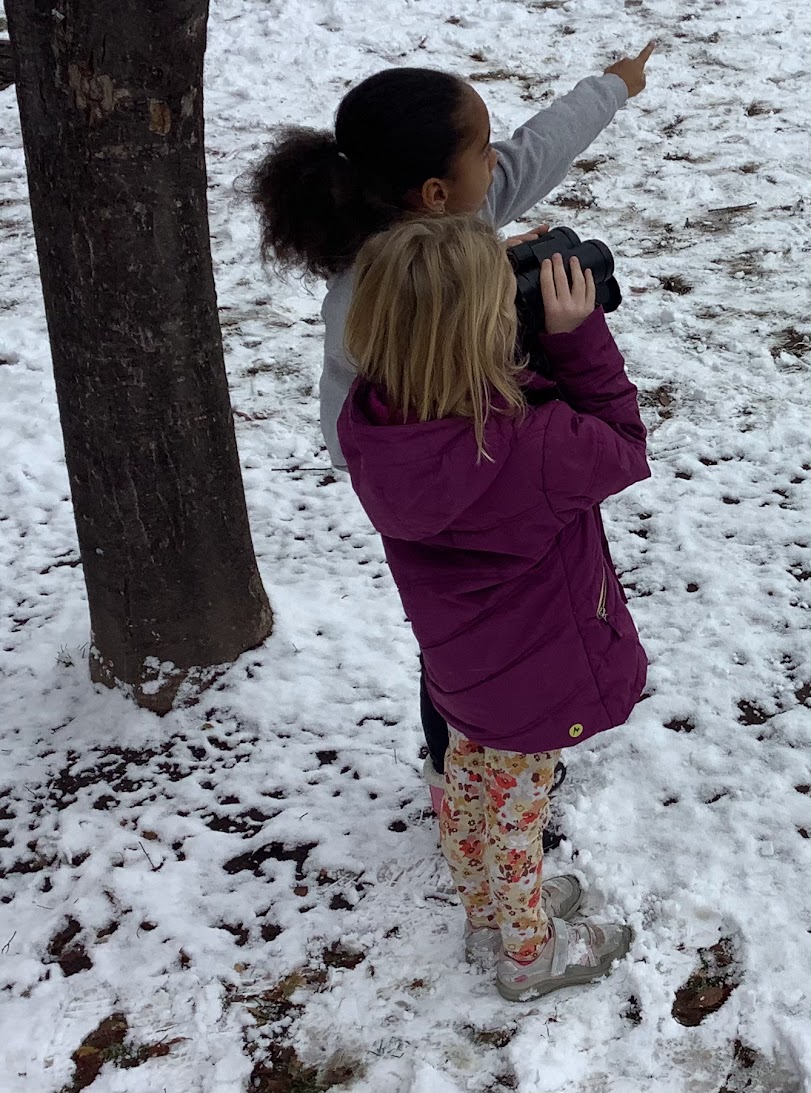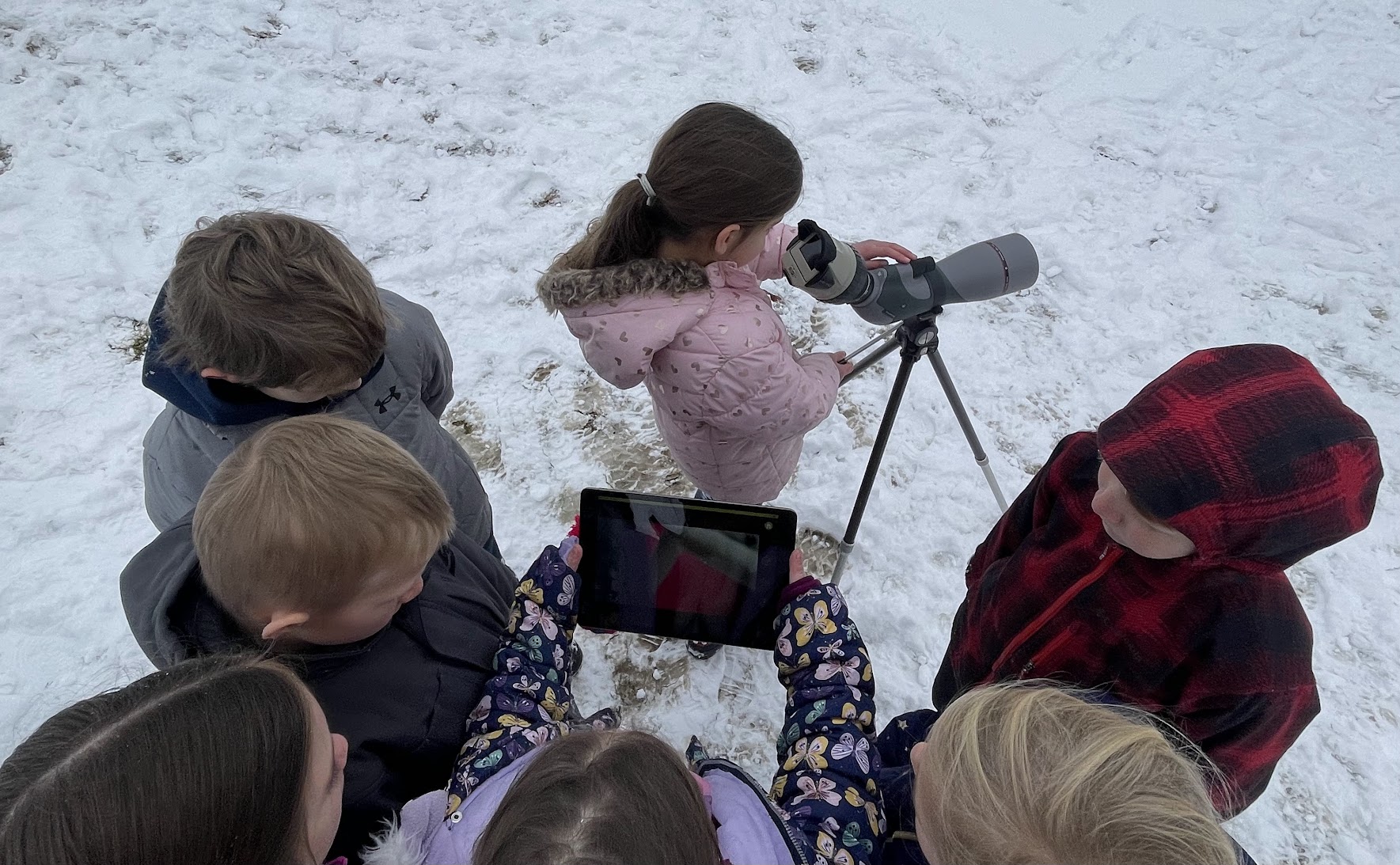
Courtesy & Copyright Joseph Kozlowski, Photographer

Courtesy & Copyright Joseph Kozlowski, Photographer
 Steller’s Jay in Cemetery
Steller’s Jay in Cemetery
Courtesy & Copyright Joseph Kozlowski, PhotographerAs usual, kids surprise me.
What I think kids should focus on is rarely the object of their attention, and the way their journal ends up, both intellectually and physically, never resembles my lavish intentions.
If you’ve ever tried nature journaling with young children outdoors, you’ve probably realized that instead of the eloquent John James Audubon’s entries with magnificent illustrations of birds and poetic texts, what really manifests – if the child hasn’t lost their writing utensil altogether – is a half torn page, muddy and damp from being haplessly set in the dewy grass, with only the resemblance of barely decipherable images or text.
However, if you can accept the physical condition of the journal, with all its imperfections, you may come to find the true beauty and originality in the children’s thoughts, which usually ascend to places beyond our adult imagination.
The following nature journal entries are from 2nd-grade students (7-and-8-year-olds) and centered on a Steller’s Jay they discovered while birding at the Logan City Cemetery.
Across my years of exploring the majestic outdoors with young children, I’ve experimented with nature journaling. I always have grandiose ideas. Ideas of what I want their entry illustrations to look like, ideas of what I hope their written words will sound like, and ideas about what memories I hope their journal will encapsulate.
As usual, kids surprise me.
What I think kids should focus on is rarely the object of their attention, and the way their journal ends up, both intellectually and physically, never resembles my lavish intentions.
If you’ve ever tried nature journaling with young children outdoors, you’ve probably realized that instead of the eloquent John James Audubon’s entries with magnificent illustrations of birds and poetic texts, what really manifests – if the child hasn’t lost their writing utensil altogether – is a half torn page, muddy and damp from being haplessly set in the dewy grass, with only the resemblance of barely decipherable images or text.
However, if you can accept the physical condition of the journal, with all its imperfections, you may come to find the true beauty and originality in the children’s thoughts, which usually ascend to places beyond our adult imagination.
The following nature journal entries are from 2nd-grade students (7-and-8-year-olds) and centered on a Steller’s Jay they discovered while birding at the Logan City Cemetery.
- Steller’s Jay Steller’s Jay you are so naughty
and above your eye you have a spotty
You steal food; we give food, you with a bad mood
But rarely I see you because you hide from my view.
- Steller’s Jay Steller’s Jay black and blue
crest like a mohawk
in the sun, in the light, in a tree
flying out on a Thursday afternoon your colors shine
Steller’s Jay Steller’s Jay what a pretty sight.
- You’re flying, I’m finding
It’s day but you’re night
You’re so pretty like flowers
You’re hiding but I’m still finding
You can hide but I’ll still find
It’s getting late so I have to leave.
- Oh in the graveyard you blend in to the night
Your colors scare any visitors away from the house of the dead.
I am Dr. Joseph Kozlowski, and I am wild about outdoor education in Utah!
Credits:
Images: Courtesy & Copyright Joseph Kozlowski, Photographer, Used by Permission
Featured Audio: Courtesy & Copyright © Kevin Colver, https://wildstore.wildsanctuary.com/collections/special-collections/kevin-colver and including contributions from Anderson, Howe and Wakeman
Text: Joseph Kozlowski, Edith Bowen Laboratory School, Utah State University https://edithbowen.usu.edu/
Additional Reading Links: Joseph Kozlowski & Lyle Bingham
Additional Reading:
Joseph (Joey) Kozlowski’s pieces on Wild About Utah:
Steller’s Jay, All About Birds, The Cornell Lab of Ornithology, https://www.allaboutbirds.org/guide/Stellers_Jay/overview
Steller’s Jay Cyanocitta stelleri, Utah Bird Profile, Utah Birds, http://www.utahbirds.org/birdsofutah/ProfilesS-Z/StellersJay.htm
Other Photos: http://www.utahbirds.org/birdsofutah/BirdsS-Z/StellersJay.htm
Rhodes, Shannon, Wild About Nature Journaling, Wild About Utah, June 22, 2020, https://wildaboututah.org/wild-about-nature-journaling/
Kozlowski, Joseph, Simple Suggestions for Kids in the Field, Wild About Utah, February 12, 2024, https://wildaboututah.org/simple-suggestions-for-kids-in-the-field/










